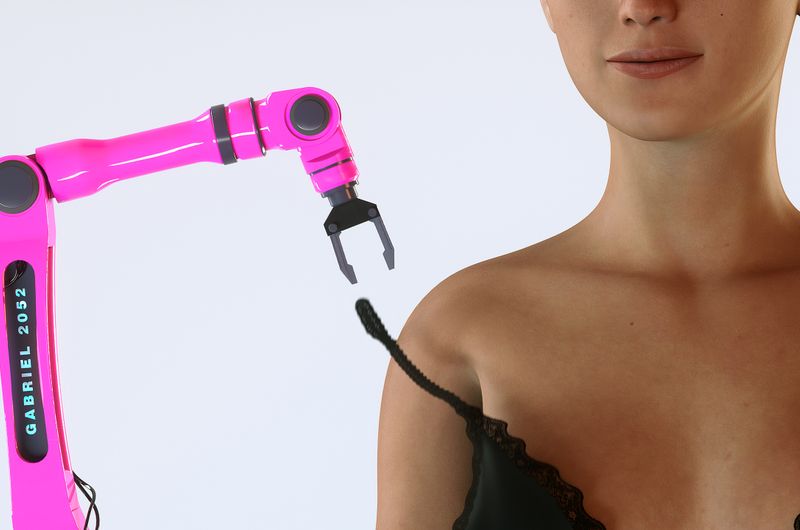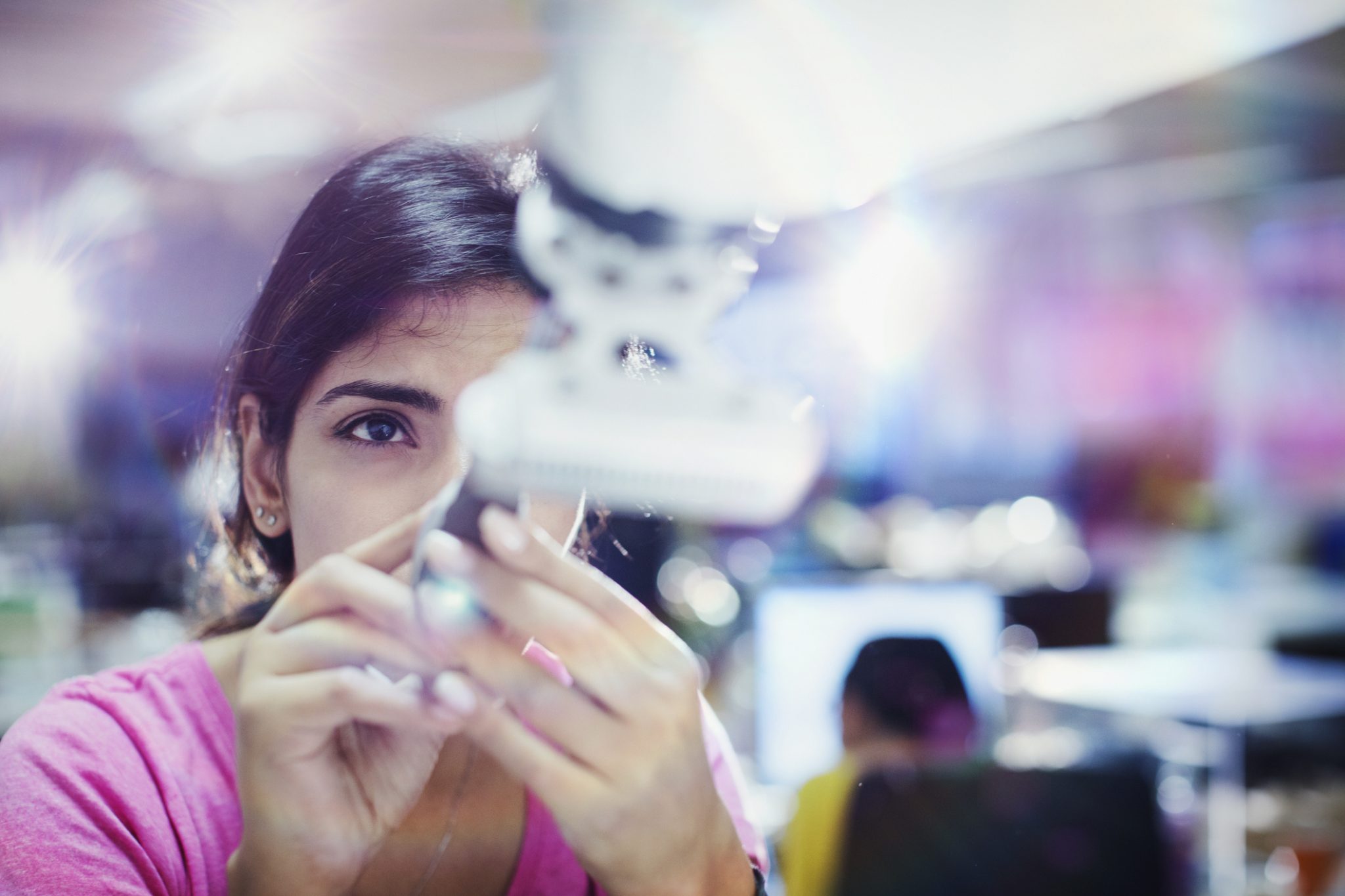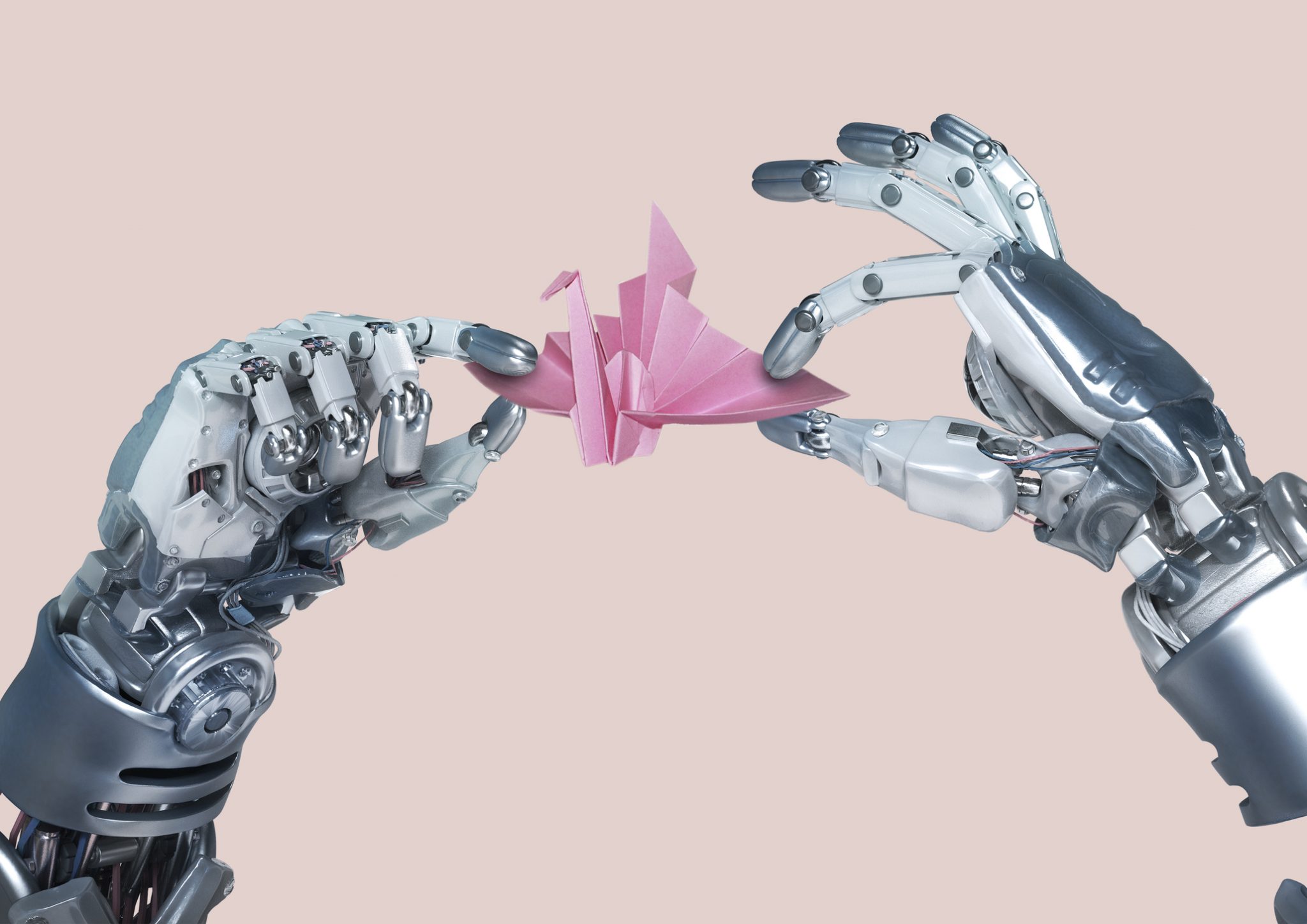‘It’s a chance to live my best life’: meet the woman building her own robot boyfriend

Written by Georgia Lewis Anderson
Can you fall in love with a robot? Stylist meets the woman building her very own robotic partner, for a lesson in life, love and the importance of communication.
It sounds like the plot of a sci-fi film: a woman in New York is building her own robotic boyfriend, coded to communicate using messages she once shared with her (human) ex-partner.
But the scenario is very real. Chinese designer, artist and writer Fei Liu is currently creating a robot to become her boyfriend, as part of a project called ‘Build the Love You Deserve’. The robot is called Gabriel2052, or Gabriel for short, and it has been coded to communicate using real life messages that Liu exchanged with her ex-partner. She hopes the project will teach her about communication, love and, above all else, herself.
“Build the Love You Deserve is a performance series centered on the semi-fictional relationship between the artist and her do-it-yourself robotic boyfriend,” reads Liu’s website. “Based on the artist’s growing infatuation with a non-humanoid robot, the performance highlights the emotional, societal, and technical hurdles she must overcome to actualise their love. Could the organic and fickle language of love truly be spoken between human and machine?”
Here, Stylist meets Liu, to learn more about love, language and the very real role that robots could play in our relationships in future.
I speak to Fei Liu on a crackly Skype line from her co-working space in Brooklyn after months following the development of the project on social media.
I’ve written about sex dolls before. They were typically female, hypersexualised in form and – quelle surprise – made by men. I’ve even met and interviewed David Levy, the man who wrote the book Love And Sex With Robots, who predicts we’ll be marrying machines by 2052 (he’s in his 60s and says his wife is very understanding of his predictions…).
But Liu is the only woman I’ve ever heard of who is building a robot with the intent of making it her boyfriend.
“I’m not actually the first [to build a robot],” she corrects me. “There is a woman, who is French I believe, who was 3D printing her own boyfriend. I can’t find her on the internet anymore, so I feel like she might have been attacked by trolls.
“She was coming at it from a different place than me, though. I think she actually identifies as robo-sexual. And I don’t.”
Let’s pause here for a minute. Robo-sexual?
“For her, it meant she doesn’t like people,” Liu explains. “I’m assuming that it’s something about the organic-ness of the human body, or the fickleness of the human mind, that she doesn’t like. I think she likes plastic.”
Liu adds that there is a trend for ‘digi-sexuality’ gaining traction in certain parts of the world.
“It’s hard to define, but one aspect is ‘chat apps’ that simulate characters you can fall in love with,” she explains. “There’s some sort of storyline there, so it feels somewhat real as you’re chatting to them… You navigate real-life situations and fall in love with these characters.”
Where does Liu sit in this spectrum?
“I feel like I’m able to separate fantasy from reality. Gabriel is a robot boyfriend that I am building for myself as a way to explore what I think relationships are in this current state of the world. He is an extremely personal project as I’m trying to figure out what relationships even mean for me.”
The project is so personal that she’s even used texts between her and her ex to code Gabriel’s communications. And how did that conversation go with her ex-human-lover?
“That particular partner of mine is very interested in my project, so it was quite easy to get his approval,” Liu says. “Since then there’s been two other people who I would like to get text messages from, and that might be a different discussion. Not everyone is willing to engage in an ‘art as life’ kind of project, or for me to hold a mirror up to our relationship.”
In a digital age of ghosting, where not even getting a text back from someone you’ve been on a date with is the norm, I appreciate the comfort that might come with guaranteed, loving communication – whether that is from a human or not. And I can’t help but applaud her commitment.
Although when you see Gabriel – who is handbag-sized and full of exposed wires that connect his robotic arms – the kind of touching people like to do when they’re feeling romantic is definitely not what first springs to mind. “It’s not a very realistic body,” acknowledges Fei. “I think right now it’s just a stand-in for future bodies. I haven’t really decided what sort of form he’ll have yet… It feels like bodies don’t really matter, because we could just talk to each other through an app or something similar. And a lot of things can be stimulated to feel real.”
However, it’s important to Fei that the project isn’t just about her journey through relationships, and how much she does, or doesn’t, want to give Gabriel a cuddle. “It’s also a way for me to be in dialogue with other women who are makers of technology.
“The creators of A.I. sex dolls and love dolls are mostly men who are creating hyper-sexualised female figures. I think that is quite damaging, so creating Gabriel is my position against that movement.”
She tells me about the workshops she runs teaching young girls how they too can make their own robot boyfriends.
“It’s interesting because they’ll all program him to be a certain kind of way,” she says. “This is often quite reflective of their own tastes, or the past relationships that they’ve had.”
One time, says Liu, a young woman turned her robot into an archetype of a ‘sad boy’. The robot was completely unreliable and had very inconsistent behaviour, and was programmed to care mostly about its own feelings.
“I think that spoke volumes about how she wanted to be treated,” Liu says. “We had a conversation afterwards about her past relationships, even though I’m not a therapist. I think people open up to me because the topic is so emotional.
“And the idea of stimulations is interesting. Stimulating different possibilities of what kind of life you could have, or how you could be treated differently – for example, if there was a giant Second Life scenario where you could watch yourself live life in reaction to different types of people who enter into it. That idea is fascinating to me because I think that’s what technology wants to deliver to you. The chance to live ‘your best life’ so that you don’t make mistakes.”
Has building Gabriel helped her quest for better relationships in future? “There’s no guaranteed success with what I’m doing, and it’s always going to be a bit of a failure – and that’s the whole point of actually getting into relationships!” Liu says. “Your goal post is always going to be moving, because things and people are always changing. And that’s why I don’t have an end state for what Gabriel looks like, or what he can do, because I’m always changing and learning more about myself. I plan on working on Gabriel for about 10 years.
“Love for people is kind of unattainable. The image of love in society is so perfect that we struggle to obtain it through partnership, and the search for something out of reach is beautiful.”
I leave my call with Liu hopeful about the potential of robotics to explore the emotional side of a relationship, rather than just the sexual. Perhaps this is just the beginning of AI and robotics ability to aid our self-discovery? Watch this space.
Images: Getty, Fei Leu
Source: Read Full Article


